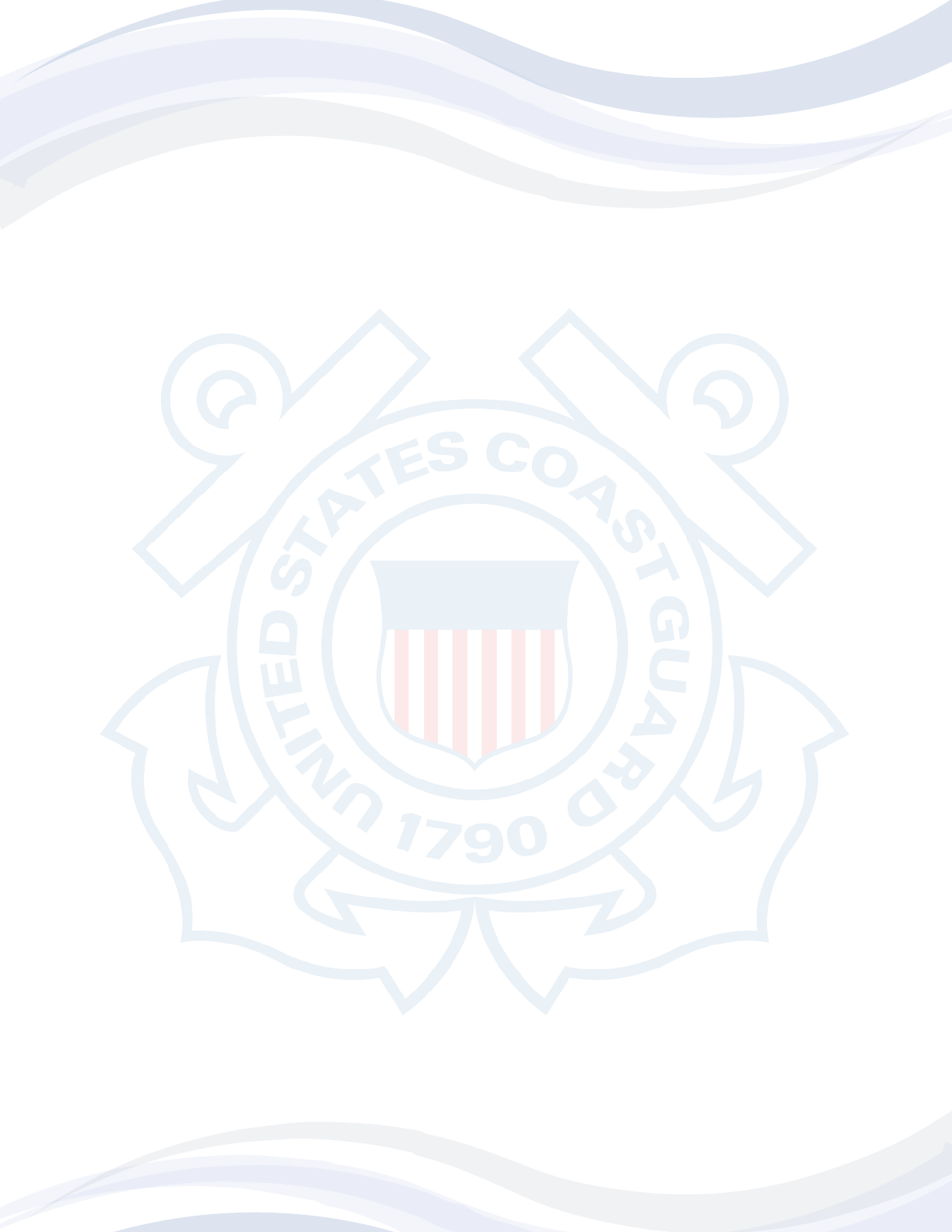
GLOSSARY OF TERMS
Acceptance Trials is a rigorous test process and material inspection carried out by the government, oen represented by the U.S. Navy’s
Board of Inspection and Survey, on a ship while underway to determine its suitability for delivery from a private industrial shipyard.
Builder’s Trials is a contractor-conducted event to inspect, test and evaluate a ship’s performance underway. One important purpose
of builder’s trials is to assure the builder and the government that the ship is or will be ready for acceptance trials. e builder’s trials
process typically includes a comprehensive test of all ship’s equipment and is similar in scope to acceptance trials.
Christening is a long-standing naval tradition including a ceremony during which the ship’s sponsor breaks a bottle of champagne
across the bow and grants the ship its name.
Commissioning is an elaborate ceremony that ocially places the ship in service and adds the prex “U.S. Coast Guard Cutter” to its
name. Prior to commissioning, it is inappropriate to use this title before the ship’s name, as the vessel is not yet ocially in government
service. Although commissioning places the ship in service, much work usually remains to be done by the crew to bring the ship to its
full operational capability.
Delivery is the date on which a representative from the Coast Guard ocially accepts custody of the ship from the shipbuilder,
signifying that all systems have been tested and discrepancies corrected to the government’s satisfaction. e ship’s pre-commissioning
crew moves aboard to perform training, qualication and certication of equipment activities.
Dock Trials is a broad term referring to events conducted at the shipyard to determine the ability of the ship to conduct sea trials safely
from a material standpoint.
Laying the Keel represents the beginning of a ship’s construction. e keel is the key structural member stretching the length of the
ship.
Launch is the date on which a ship is rst placed in the water. e ship must be watertight, but construction need not be complete for
launch to take place.
Light-O occurs as various major components of the ship are completed, energized and tested. Light-o events occur for items
such as electronic systems – which may include the ship’s command, control, communications, computers, intelligence, surveillance
and reconnaissance equipment – electrical generators, combat systems and main engines. ese events are signicant steps in the
construction process.
Machinery Trials – oen synonymous with, or occurring as part of, dock trials – are inspections, tests and evaluations specic to the
ship’s machinery, including its main propulsion system.
Pre-Commissioning Crews are designated to take charge of the ship following delivery. e pre-commissioning crew’s task is to
prepare the vessel and its mission systems for full operational capability in Coast Guard service.
Post-Shakedown Availability is an industrial activity availability following delivery and is used to correct deciencies found during the
shakedown period or to accomplish other authorized improvements to the ship.
Sail Away is the date of the ship’s nal departure from the construction yard for its homeport or commissioning site. is date signies
the end of the new construction and the beginning of nal preparations for operational service.
Sea Trials is a general term referring to a series of rigorous, underway tests to conrm that the ship’s hull, mechanical and electrical
and other systems function as required. Trials typically have three phases. e rst is dock trials, which oen includes machinery trials,
conducted while the ship is still tied to the pier. e second is builder’s trials, which are performed at sea by the contractors who built
the ship. e third is acceptance trials, which are conducted at sea and ashore by government personnel. Discrepancies noted during
trials must be corrected prior to delivery.
Ship Naming traditionally occurs before the ship is christened, while construction is in progress. During the naming phase, the ship’s
sponsor, who will christen the ship, also is selected. In the case of ships named for individuals, an eort is made to identify the eldest
living direct female descendant of that individual to perform the role of ship’s sponsor.
Stepping the Mast is an ancient practice in which coins are placed under or near the ship’s mast. Traditionally, the value of the coins
usually adds up to the ship’s hull number.
